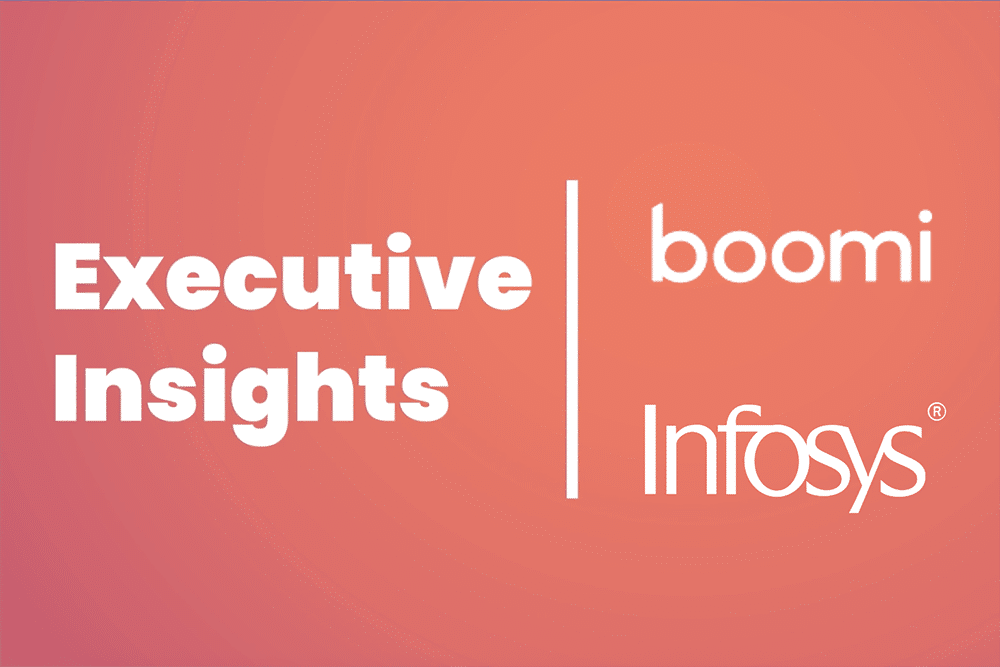Boomi CEO Steve Lucas and SP Singh, Head of Enterprise Applications and Integration Services at Infosys, recently discussed the future of integration and automation and their role in the emergence of agentic transformation of enterprise systems.
Their conversation touched on several hot-button issues, one of which we’ll examine here: advice for CIOs and CDOs as they attempt to steer their organizations through the modern-day Scylla (failing to prepare) and Charybdis (moving too quickly) of digital transformation in the age of AI.
We’ve put together some of the essential advice shared by Lucas and Singh, starting with a 50-second video where they discuss taking AI from proof of concept to production:
Align Integration With Business Goals
Singh offered this advice: “I get the question quite often. And while there are multiple things, my usual recommendation is that you align your integration and automation strategy, keeping in mind your business goals. Second, you need to break down data silos and unify data across systems. Digital transformation is not just about adopting new technologies; it’s about fundamentally reimagining business processes, customer experiences, and operations to achieve strategic advantage and strategic business goals.” In other words, every integration effort should contribute to the overarching objectives of the organization.
Focus on High-Impact Projects
For CIOs and CDOs, measurable results need to justify costs. That means for integration and automation efforts intended to smooth the road to agentic AI, start with projects that promise significant return on investment (ROI). Measure the results of these initiatives and scale the successful ones. Discontinue those that don’t deliver value — a variation of the “fail fast” mantra.
Keeping business goals at the forefront allows organizations to ensure their integration efforts go beyond technical exercises. They’re directly tied to enhancing customer experiences, improving operational efficiency, and driving innovation.
Break Down Data Silos to Unify Data Across Systems
It’s no secret that for many organizations, data exists in disconnected systems, making it difficult to access and use for decision-making.
“Don’t wait for your organization to get too far down the AI path before it realizes what’s broken,” Lucas cautions. “What’s broken is your unintegrated systems, your fragmented data sources. The next time you’re sitting in a meeting, and you have that ‘which data is accurate conversation,’ you should know your organization is not prepared for AI. Build systems that fix themselves, that are self-driving in nature, and teams that think about systems holistically, not the silos that drive them.”
Leverage Modern Integration Platforms
Modern, AI-driven integration and automation platforms like the Boomi Enterprise Platform facilitate seamless data flows and real-time access to information. These platforms can connect disparate systems and automate processes, enhancing organizational agility. Integration is a strategic advantage that can propel an organization forward. As organizations increasingly adopt artificial intelligence (AI) and automation, it’s crucial to ensure that these technologies are integrated effectively.
Avoid Agent Fragmentation
Many organizations face challenges when their AI agents operate in isolation. For instance, a procurement agent may not trigger inventory updates, or a customer service agent may lack access to order history. This fragmentation leads to chaos, inefficiencies, missed opportunities, and risk.
“I’m pretty sure your team has built some AI agents. They work. But they don’t work together,” Lucas elaborates. “That’s a problem every CIO is running into now. You test agents, they perform tasks, but the moment you need them to coordinate with each other or plug into actual business processes, you hit a wall.
Building agents isn’t hard anymore. Making them useful at enterprise scale is. This is exactly why we built Boomi Agentstudio: not to add more agents to your stack but to make the ones you have actually work as a system.
Think of it as a service bus for AI. (Yes, an old-school term.) Every agent — whether you built it, bought it, or inherited it — gets connected, governed, and orchestrated through your real business workflows.
The companies that win with AI won’t be the ones with the most agents. They’ll be the ones whose agents actually work together.”
The Future of Integration
The rise of AI will undoubtedly gather more momentum. So, CIOs and CDOs must be prepared to relearn and adapt to new integration paradigms. Organizations that do will be better positioned to capitalize on emerging opportunities.
The journey toward AI-driven digital transformation requires a strategic approach to integration. By aligning integration efforts with business goals, breaking down data silos, treating integration as a strategic advantage, and embracing AI, CIOs and CDOs can accelerate their organizations’ transformation journey.
For additional insights, watch the full conversation between Steve Lucas and SP Singh.

 English
English 日本語
日本語